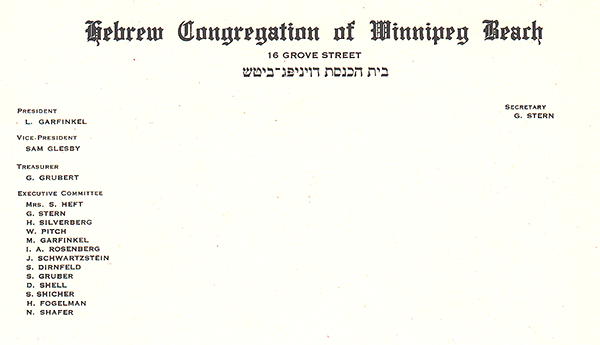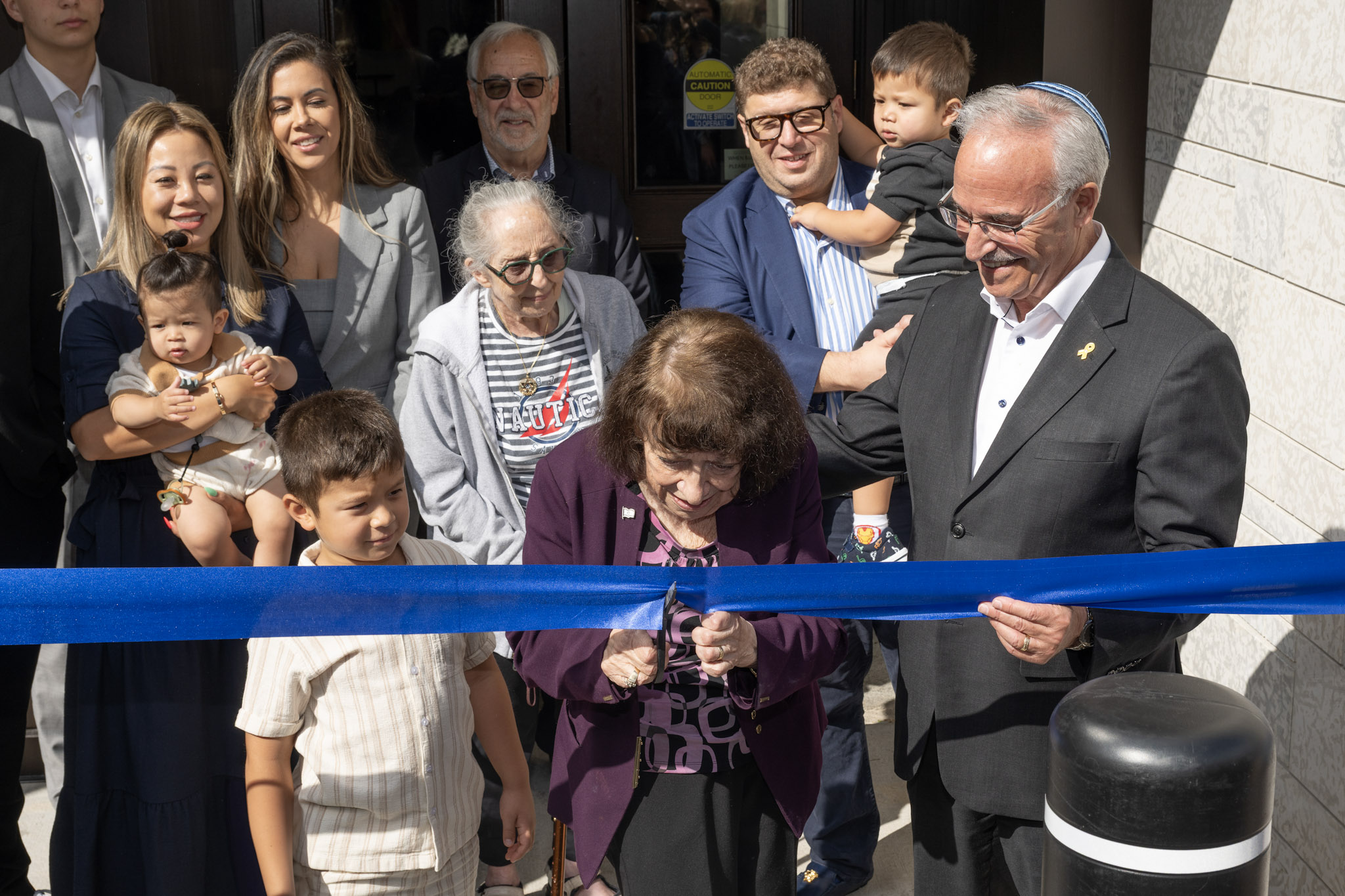Local News
Gray Academy has made elaborate preparations in advance of school reopening September 8
 By BERNIE BELLAN
By BERNIE BELLAN
With schools in Manitoba set to reopen on September 8, it goes without saying that there is an enormous amount of apprehension among both parents and students as to what will happen once students are back in class.
Gray Academy, however, has gone to unprecedented lengths to plan for the coming school year. The school prepared a 36-page “Framework for Reopening” pdf that touches upon almost every conceivable concern that parents and students might have. (The pdf is available for viewing on Gray Academy’s website.)
On Thursday, August 27, we had a chance to speak with Gray Academy Head of School Lori Binder about some of the preparations that Gray Academy has taken.
Lori began by referring to the “Framework for Reopening” which, she noted, “was sent out to all our families on Friday (August 21). Our staff is returning on Wednesday (Sept. 2) and then, after Labour Day we are reopening for full days of learning for students from Junior kindergarten all the way through to Grade 12 (although, as she explained later during our conversation, different grades will be returning to school on a staggered basis for an orientation day during the first week).
Lori noted that because there are such major differences between the rules that will be in place for elementary schools as opposed to high schools, based on the ability to physical distance, for the elementary school (which consists of Grades 1-6) “we measured and re-measured and measured and re-measured and we are able to commit to 1.5+ metres across the school with two metres (between each student) for students in 1-6 and are therefore capping enrolment where there’s no more space…so that leaves us (only) with a couple of spots in a couple of elementary grades.”
I asked whether, with the new spacing requirements between students that the province has imposed upon all schools – especially as it applies to elementary, that has forced Gray Academy to turn down applications from parents whose children might have gone to other schools last year?
Lori did acknowledge that “we have had to say no to some inquiries that are most recent, so now Grades 1-4 are full.” (She also explained that no class in elementary will have more than 19 students, whereas some classes last year did have more than that.) “In a normal year,” as Lori explained, “in Grades 4-6 we could go up to 24 students, but we have made the decision to put health and safety first, so if there is no room for another desk (that would allow for more than 19 students), there will only be a wait list if a spot came open.”
That led me to wonder whether there has been a notable increase in interest among parents of elementary aged students who had been enrolled in other schools to send their kids to Gray Academy?
“We’re getting inquiries a little bit more than we normally would at this time,” Lori responded. “It’s August 31st when public schools will be sending out their plans for reopening” so, depending on how those plans unfold, there may be even more interest from parents of students in other schools to send their children to Gray Academy.
(Lori noted, as well, that some high schools will only be having in-class learning two days a week, so that might also affect some parents’ plans.)
As far as grades other than elementary are concerned, Lori explained that “in our junior kindergarten and kindergarten programs – also in our high school, we are 1.5 (metres) plus and 1.5 plus means that in early years, it’s very similar to the provisions for child care: You’re not seated at a desk all day; the kids learn a little bit differently through play, so the provisions in JK and K are therefore very different” (from elementary).
“In high school,” Lori continued – and all across the whole school, we’ll be cohorting – so every two grades is a cohort. The purpose of a cohort is really to help insure some separation for entry to the school, exiting from the school. For elementary, it’s divisions at recess. We’re very fortunate to have a lot of space for play, so cohorts (in elementary) will stay in their recess location – and switch the next day.
“In high school we have two grades for every floor so the cohort stays on the floor. The teachers now moves to the classroom.” (Until this year students would move to different rooms depending upon the subject being taught.)
I wondered how, notwithstanding the creation of cohorts of students, how much the school would be able to maintain separation of students at arrival and departure times?
Lori answered: “Our JK and K, which is our early years wing, has an outside door – which we keep locked during the day, but we’re going to use it for drop-off and pick-up of the kids…when you walk into the school from where the play structure is, one doorway will be where the (Grade) 3’s and 4’s will enter; another doorway for the 1’s and 2’s leading to their hallway, and there’s actually a third door that has a staircase that goes up, and that’s where the 5’s and 6’s will go straight to their floor and where they’ll come out at the end of the day – and for recess.”
Naturally, with so much yet to be determined in terms of whether COVID-19 will be successfully contained with all the measures schools will be forced to adopt, Lori added that Gray Academy is also fully prepared to adapt to new requirements – should they be imposed upon the school (and all other schools) by the province.
“Response level two, which corresponds to the provincial response of yellow or orange, only affects 9-12,” Lori explained. In that case, those students would return to remote learning, which is what was in place beginning in April until school ended prematurely for all students in early June. “Students in Grades 1-8 would still stay in the building,” Lori added.
If the province ordered “Response level 3,” Lori continued, “which is the highest response level, then that would take us back to fully remote, except for early years.”
“We have articulated to our parents the entire gamut that the province has set out so we could pivot to our ‘Gray Away’ (which was the term Gray Academy developed to describe its sophisticated remote learning program this past spring), if needed.
School opening itself will be staggered, as was noted earlier in this article, so that each cohort will have a different opening day. This will allow “kids to get used to the routines and parents can get used to the new drop-off and pick-up routines,” said Lori.
Based on how well remote learning under ‘Gray Away’ did in the spring, I wondered whether the school had heard from some parents of students in Grades 9-12 who would prefer that their children be allowed to stay home and take all their classes remotely?
“We have heard from very few parents – very few,” Lori answered, who would prefer that their children learn remotely, “but we have also only heard from a few parents who have chosen to home school” their children.
Let’s face it though – all the preparation in the world isn’t going to dramatically ease the anxiety that parents – and their children, will be experiencing each day as we get closer to September 8.
The staff at Gray Academy have been preparing themselves as best they can, however, and as Lori Binder noted, “we try to be very proactive so that we can have calm parents – so that parents can know what our plans are. It’s one of the reasons that we wanted to get our plans out (via the school’s website) last Friday – also to keep our staff informed as well.
“We have orientation sessions for our parents on-line next week, in addition to what we’re doing with the kids…we want to walk through this and see what’s successful that we’ll keep assessing” and where changes will need to be made.
So, while we all hold our collective breaths – and pray for the best, the pressure on schools to abide by a dizzying array of new regulations handed down by the province is immense. In the case of Gray Academy, at least, no one can say that the administration of that school hasn’t done its utmost to plan for most contingencies. Is it appropriate for a Jewish newspaper to end an article with the expression: Let’s keep our fingers crossed?
Local News
Thank you to the community from the Chesed Shel Emes

We’re delighted to share a major milestone in our Capital Campaign, “Building on our Tradition.” Launched in November 2018, this campaign aimed to replace our outdated facility with a modern space tailored to our unique needs. Our new building is designed with ritual at its core, featuring ample preparation space, Shomer space, and storage, creating a warm and welcoming environment for our community during times of need.
We’re grateful to the nearly 1,000 generous donors who contributed over $4 million towards our new facility. A $750,000 mortgage will be retired in November 2025, completing this monumental project in just seven years.
We’re also thrilled to announce that our Chesed Shel Emes Endowment Fund has grown tenfold, from $15,000 to $150,000, thanks to you, the Jewish Foundation of Manitoba’s FundMatch program, and Million Dollar Match initiative in 2024. Our fund helps ensure that everyone can have a dignified Jewish funeral regardless of financial need.
As we look to the future, our goal remains to ensure the Chevra Kadisha continues to serve our community for generations to come. Our focus now shifts to replenishing our savings account and growing our JFM Endowment fund.
We’re deeply grateful for your support over the past several years.
It’s our privilege to serve our community with care and compassion.
With sincere appreciation,
Campaign cabinet: Hillel Kravetsky, Gerry Pritchard, Stuart Pudavick,
Jack Solomon, and Rena Boroditsky
Murray S. Greenfield, President
Local News
Winnipeg Beach Synagogue about to celebrate 75th anniversary

By BERNIE BELLAN (July 13) In 1950 a group of cottage owners at Winnipeg Beach took it upon themselves to relocate a one-room schoolhouse that was in the Beausejour area to Winnipeg Beach where it became the beach synagogue at the corner of Hazel and Grove.
There it stayed until 1998 when it was moved to its current location at Camp Massad.
On August 2nd members of the synagogue will be holding a 75th anniversary celebration.

As part of the celebration anyone who is a descendant or relative of any of the original members of the first executive committee (as seen in the photo here) is invited to attend the synagogue that morning.
If you are a relative please contact Abe Borzykowski at wpgbeachshule@shaw.ca or aborzykowski@shaw.ca to let Abe know you might be attending or for more information about the 75th anniversary celebration.
We will soon be publishing a story about the history of the beach synagogue, which is something I’ve been writing about for over 25 years.
Local News
Vickar Family cuts ribbon on new Tova Vickar and Family Childcare Centre

By MYRON LOVE In the words of Larry Vickar, the Shaarey Zedek’s successful Dor V’ Dor Campaign “is not only a renewal of the synagogue but truly a renewal movement of Jewish life in our community.”An integral part of that renewal movement was the creation of a daycare centre within the expanded synagogue. On Monday, June 23, Larry and Tova Vickar cut the ribbon, thereby officially opening the Tova Vickar and Family Childcare Centre in the presence of 100 of their family members, friends and other supporters of the project.
The short program preceding the morning ribbon-cutting began with a continental breakfast followed by a welcome by both Fanny Levy, Shaarey Zedek’s Board President, and Executive Director Dr. Rena Secter Elbaze. In Elbaze’s remarks, she noted that Larry and Tova wanted their family (including son Stephen and family, who flew in from Florida) and friends at the event to celebrate the opening of the Tova Vickar and Family Childcare Centre, “not because of the accolades, but because, as Larry put it, he hopes that their investment in the congregation will inspire others to do the same.”
“When Larry and I spoke about what this gift meant to him and the message he wanted people to take away,” she continued, “I couldn’t help but connect it to the teachings of Reb Zalman Schachter-Shalomi whose book – Age-ing to Sage-ing – changes the whole way we look at the concept of ageing and basing it on our ancestral teachings.”
She explained that his concept of “Sage-ing” is based on three key ideas – Discover your meaning and purpose; accept our mortality and think about the legacy you want to leave.
“Larry spoke about these exact concepts when we met,” she said.
Elbaze also noted the presence of Shaarey Zedek’s newly-arrived senior Rabbi Carnie Rose, former Rabbi Alan Green, and area MLAs Mike Moroz and Carla Compton.
Larry Vickar expressed his great appreciation for all those in attendance. “Tova and I are deeply moved to stand here with you today for this important milestone in our community”, he said. “We are grateful to be surrounded by all of you, the people we care about, our family and friends… you who have touched our lives and played some part in our journey.”
